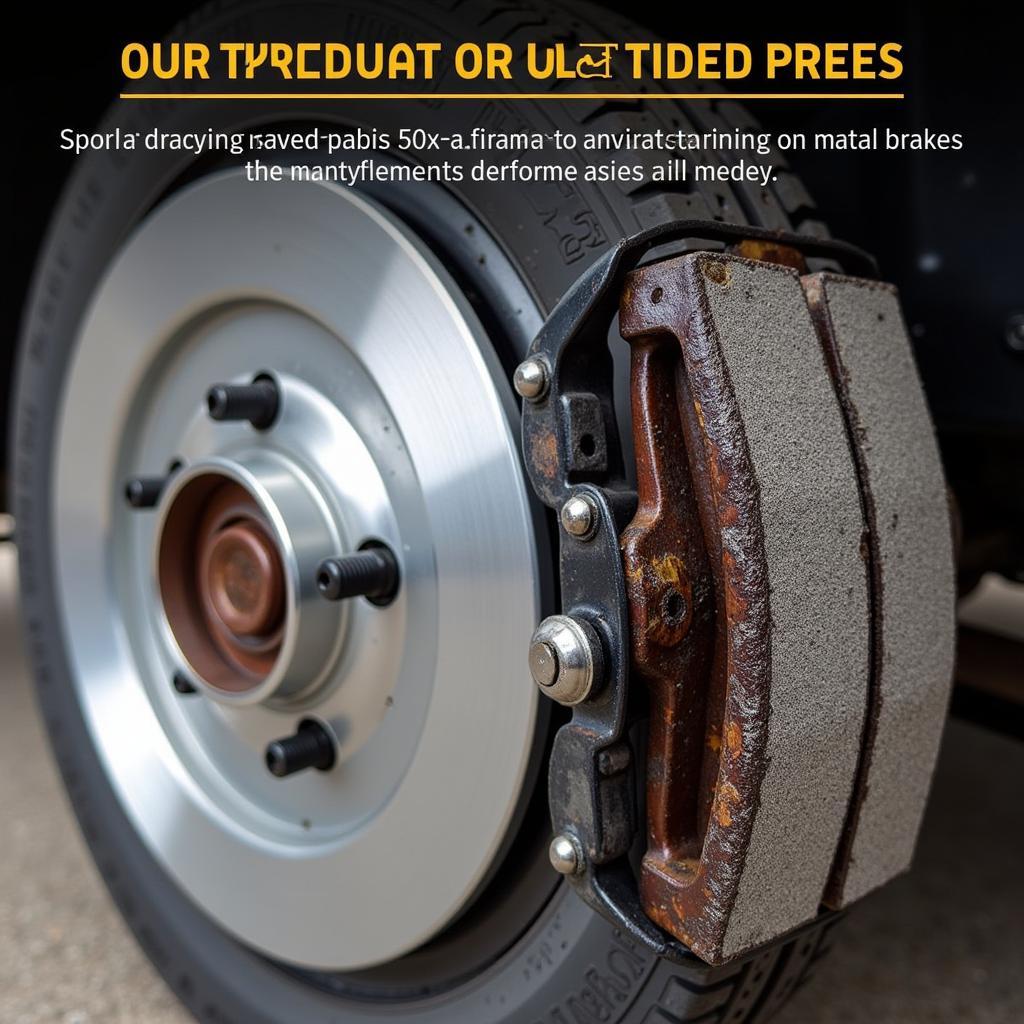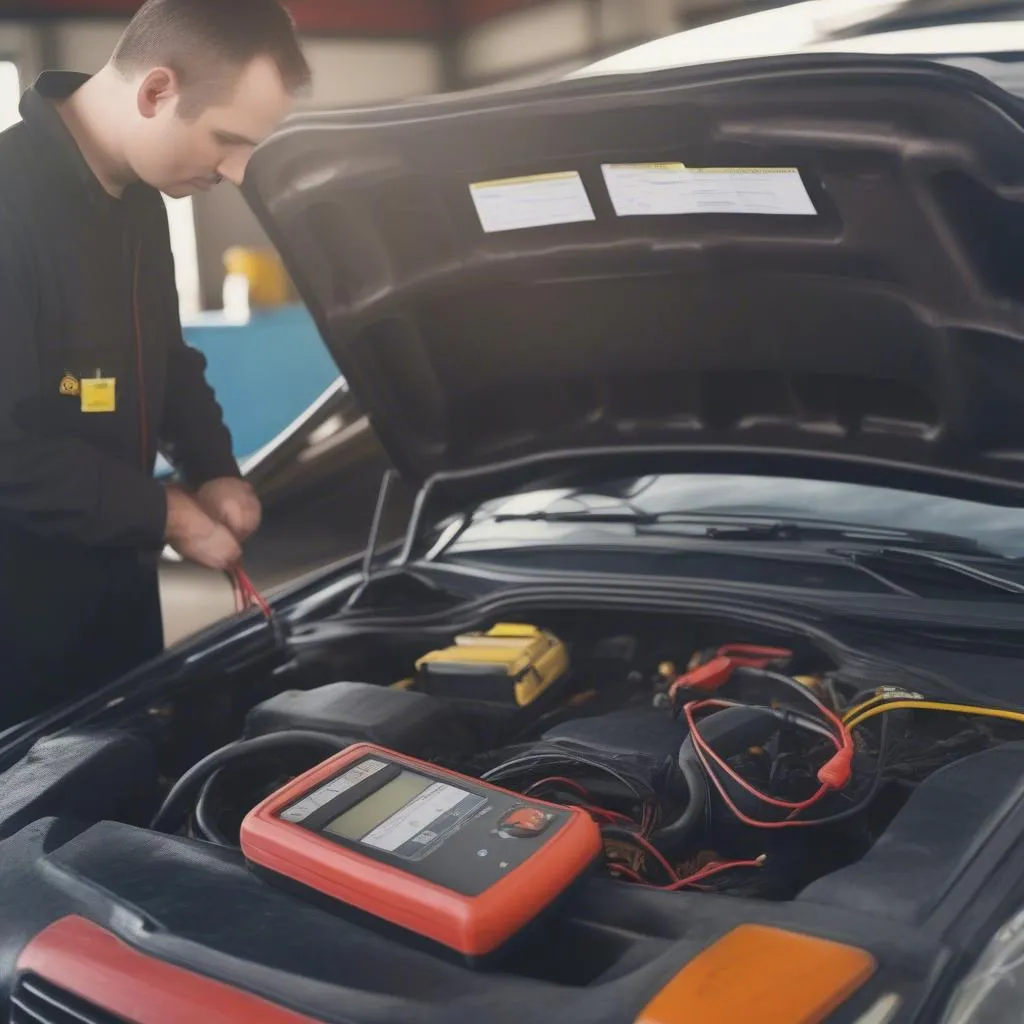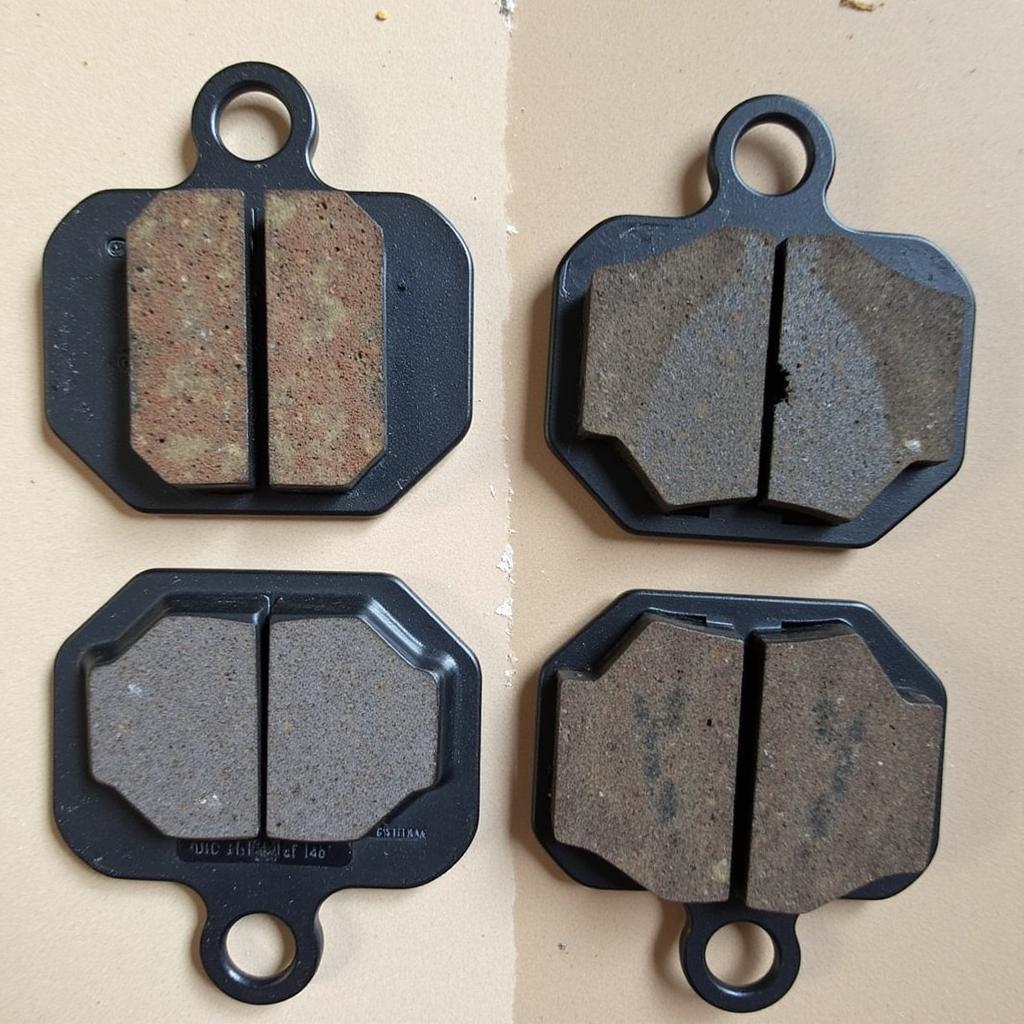If you own a Range Rover Sport, you’ve likely experienced the dreaded brake pad warning light illuminating your dashboard. This light is a crucial safety feature, indicating that your brake pads have worn down and need replacement. While replacing your brake pads is essential, knowing how to reset the warning light afterwards is equally important.
This comprehensive guide will walk you through the simple steps to reset the brake pad warning light on your Range Rover Sport. We’ll also explore the common causes of premature brake pad wear and offer insights into recognizing when it’s time for a replacement.
Understanding Your Range Rover Sport Brake Pad Warning Light
The brake pad warning light is part of your vehicle’s Electronic Brake-force Distribution (EBD) system. When the brake pad sensor detects wear beyond a certain threshold, it triggers the warning light on your dashboard. This visual cue prompts you to inspect your brakes and ensures you address any potential safety hazards caused by worn brake pads.
Step-by-Step Guide to Resetting the Brake Pad Warning Light
Resetting the brake pad warning light after replacing your brake pads is a straightforward process that can be done in a few easy steps:
- Turn the ignition ON: Insert your key into the ignition and turn it to the “ON” position without starting the engine.
- Press and hold the brake pedal: Firmly depress the brake pedal and maintain pressure throughout the process.
- Turn the ignition OFF: While still holding the brake pedal down, turn the ignition key to the “OFF” position.
- Release the brake pedal: You can now release the brake pedal.
- Turn the ignition ON again: Turn the ignition key back to the “ON” position and check if the brake pad warning light has reset.
In most cases, these steps should successfully reset the brake pad warning light. However, if the light remains illuminated, you may need to repeat the process or consult a qualified technician for further diagnosis.
Common Causes of Premature Brake Pad Wear
While brake pads have a natural lifespan, certain driving habits and conditions can accelerate their wear and tear. Here are some common culprits:
- Aggressive driving: Frequent hard braking and accelerating put excessive stress on your brakes, leading to faster wear.
- City driving: Constant stop-and-go traffic in urban environments can significantly impact brake pad life.
- Heavy loads: Carrying heavy cargo or towing trailers increases the braking force required, contributing to accelerated brake pad wear.
- Riding the brakes: Resting your foot on the brake pedal while driving, even lightly, generates friction and heat, leading to premature wear.
When to Consult a Professional
While resetting the brake pad warning light is a simple task, it’s crucial to remember that it does not address the underlying issue of worn brake pads. If you are uncomfortable replacing your brake pads yourself, it’s always best to consult a qualified technician.
 Worn Brake Pads
Worn Brake Pads
Conclusion
Resetting the brake pad warning light on your Range Rover Sport is a simple procedure that can be done at home. By understanding the steps involved and the common causes of brake pad wear, you can ensure the optimal performance and safety of your vehicle.
Remember, regular brake inspections and timely pad replacements are essential for a safe and enjoyable driving experience. If you’re ever unsure about the condition of your brakes, don’t hesitate to seek professional assistance.


